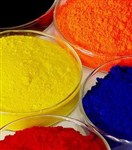How to Handle Contaminated Powder Coatings?

Powder coatings are widely used in various industries due to their durability, environmental friendliness, and cost-effectiveness. However, contamination can occur during storage or application, which can compromise the quality and performance of the coatings. This article provides detailed guidance on handling contaminated powder coatings, ensuring that they can be restored or disposed of properly.
Identifying the Type of Contamination
The first step in dealing with contaminated powder coatings is to identify the type of contamination. Common contaminants include dust, oil, moisture, and other foreign materials. Understanding the nature of the contamination is crucial for selecting the appropriate cleaning method.
Physical Separation
For contaminants such as dust, metal particles, or other solid impurities, physical separation methods are effective. Sieving the powder through fine mesh screens can remove large particles. Magnetic separation can be used to remove ferrous metals. This method is straightforward and does not alter the chemical composition of the powder.
Chemical Cleaning
When the contamination is chemical, such as oil or grease, chemical cleaning methods are necessary. Solvents like acetone, isopropyl alcohol, or specialized cleaning agents can be used to dissolve and remove the contaminants. It is important to ensure that the solvent is compatible with the powder coating and that the powder is thoroughly dried after cleaning to prevent any residue from affecting the coating quality.
Thermal Treatment
In cases where the powder has been exposed to high temperatures and has started to agglomerate, thermal treatment can be used. The contaminated powder can be placed in an oven at a temperature below its melting point to break down the agglomerates. This process should be done with caution to avoid altering the chemical properties of the powder.
Blending with New Powder
If the contamination is extensive and the powder cannot be fully restored, blending the contaminated powder with new, uncontaminated powder may be an option. This approach can salvage some of the contaminated powder, but it requires careful mixing and quality control to ensure a uniform coating.
Preventing Future Contamination
Once the contaminated powder has been handled, it is essential to implement measures to prevent future contamination. This includes improving storage conditions, using dedicated equipment for handling powder coatings, and conducting regular inspections of the storage environment.
Disposal of Contaminated Powder
In cases where the powder coating cannot be restored, proper disposal is necessary. Contaminated powder should be disposed of according to local environmental regulations. It may need to be treated as hazardous waste, depending on the type and extent of contamination.
Handling contaminated powder coatings requires a systematic approach that considers the type of contamination and the desired outcome. By employing physical separation, chemical cleaning, thermal treatment, blending, and preventive measures, it is possible to manage contaminated powder coatings effectively. It is also important to follow proper disposal procedures to protect the environment. With these strategies, businesses can maintain the quality and performance of their powder coatings while ensuring compliance with environmental regulations.

 D5 Creation
D5 Creation